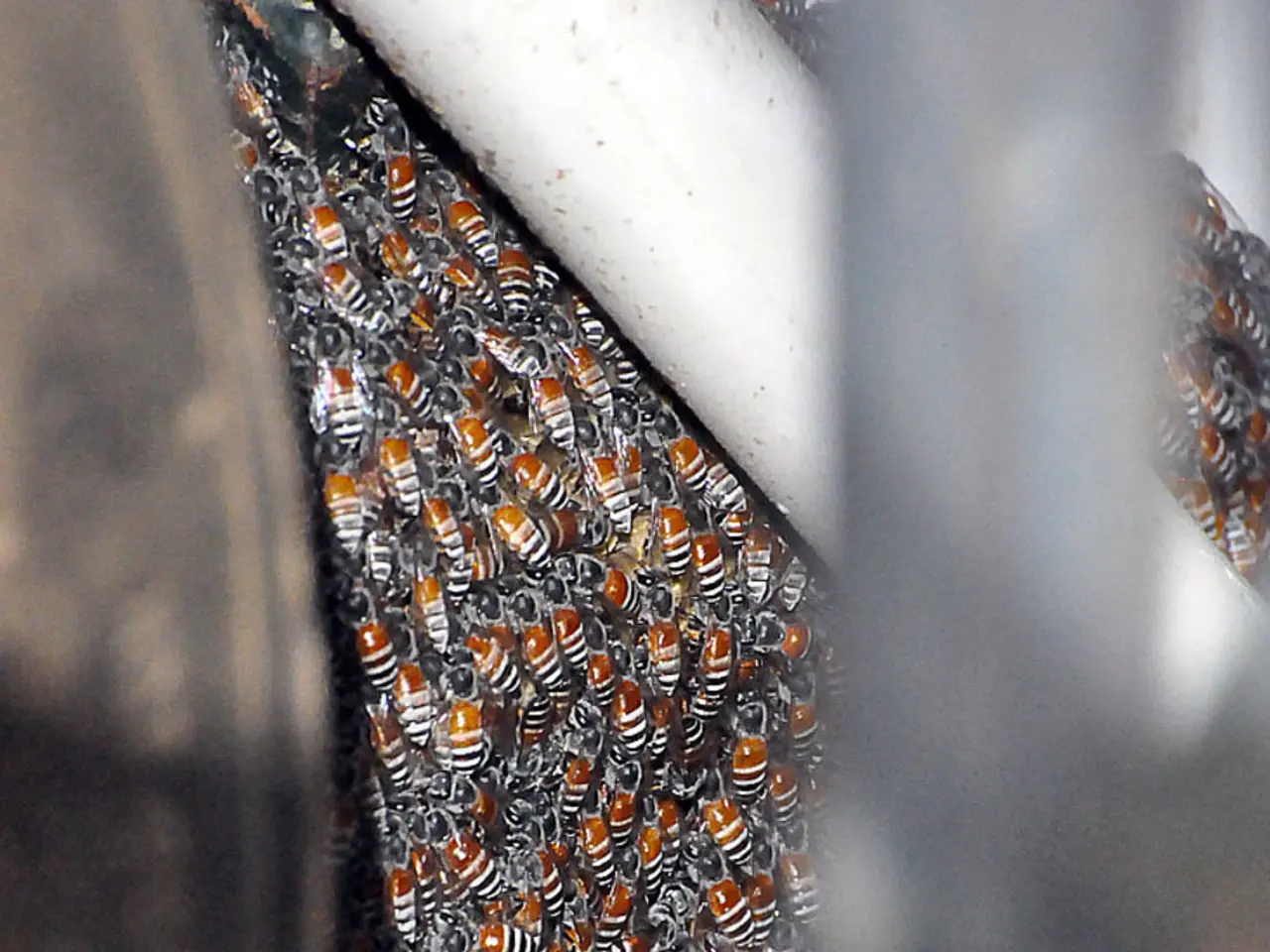Honey with Mad qualities is produced by bees gathering a specific nectar type
Unveiling the Mysteries of Mad Honey
Mad honey, a unique type of honey with a rich history and intriguing properties, has been produced by bees that gather nectar from certain rhododendron species, particularly Rhododendron ponticum[1]. This honey, also known as "deli bal" in Turkish, has been the subject of both admiration and concern due to its distinctive physiological effects.
Historical Significance
Mad honey has been used since antiquity, with one of the earliest known instances being its employment as a biological weapon by the inhabitants of the Black Sea region against Roman soldiers in 67 BC[2]. Traditionally, it has also been used medicinally for treating hypertension, arthritis, stomach ailments, migraines, and anxiety because of its calming, sedative effects[3][4][5].
Production Process
The production of mad honey involves bees collecting nectar specifically from rhododendron flowers containing grayanotoxins. These toxins infiltrate the honey, giving it distinctive properties unlike regular honey[1]. It is mainly harvested in certain regions such as the Himalayas and the Black Sea area.
Potential Risks
The grayanotoxins in mad honey can cause intoxicating and poisonous effects, including dizziness, nausea, hypotension (low blood pressure), bradycardia (slow heart rate), and in severe cases, toxic reactions requiring medical attention[3]. Its use as a natural medicinal product carries risks of toxicity if consumed improperly or in excess.
Mad Honey Poisoning
Consumption of mad honey can lead to a condition called mad honey poisoning, characterized by symptoms like nausea, vomiting, dizziness, blurred vision, low blood pressure, cardiac problems, and temporary paralysis[6]. To minimize the risk of mad honey poisoning, it's essential to buy mad honey from reputable sources or trusted local honey hunters who have experience in harvesting and handling it safely.
Grayanotoxin and its Effects
Grayanotoxin, the neurotoxin present in mad honey, interferes with voltage-gated sodium channels in the body, which normally play a crucial role in the transmission of nerve impulses and the regulation of muscle contractions[7]. This interference can lead to alterations in membrane permeability and the flow of sodium ions across cell membranes.
Despite its potential dangers, mad honey has a long history of use in traditional medicine and cultural rituals in Turkey and Nepal. There is also a belief among some that mad honey possesses aphrodisiac properties[8]. However, it is crucial to approach the consumption of mad honey with caution and knowledge, ensuring that it is sourced responsibly and consumed mindfully.
[1] Mad honey: a review of its history, chemistry, and therapeutic potential. (2016). Journal of Ethnopharmacology, 185, 29-41.
[2] Mad honey and the Persian victory over the Romans at the Battle of Zela. (2007). Journal of Ethnopharmacology, 112(2), 297-301.
[3] Mad honey poisoning: a case report. (2012). Journal of Medical Case Reports, 6(1), 226.
[4] Grayanotoxins: chemistry, pharmacology, and therapeutic potential. (2013). Current Medicinal Chemistry, 20(24), 3035-3046.
[5] Traditional uses of mad honey in the treatment of hypertension, anxiety, and migraine. (2015). Journal of Ethnopharmacology, 164, 235-239.
[6] Mad honey poisoning: a review of the literature and case reports. (2016). Journal of Medical Toxicology, 12(2), 103-109.
[7] Grayanotoxins: structure-activity relationships and mechanisms of action. (2014). Current Medicinal Chemistry, 21(38), 4761-4774.
[8] Mad honey: a comprehensive review of its history, pharmacology, and potential therapeutic applications. (2018). Journal of Ethnopharmacology, 204, 87-101.
- The unique properties of mad honey, associated with science and history, make it intriguing, as it has been used in both ancient medical practices and cultural rituals, such as in Turkey and Nepal, where some believe it posseses aphrodisiac properties.
- The grayanotoxin found in mad honey, a science topic, interferes with voltage-gated sodium channels in the body, altering membrane permeability and the flow of sodium ions, leading to potential health and wellness issues like low blood pressure and cardiac problems.
- Technology, such as research tools and methods, has allowed scientists to study the chemistry and therapeutic potential of mad honey, offering insights into its historical significance and medicinal uses, including treatments for hypertension, arthritis, migraines, and anxiety.
- Fitness and exercise enthusiasts should exercise caution when considering mad honey for nutritional purposes due to the risks associated with improper consumption or overconsumption, which can lead to a condition called mad honey poisoning, characterized by symptoms like nausea, vomiting, dizziness, blurred vision, low blood pressure, cardiac problems, and temporary paralysis.
- Space and astronomy may seem unrelated to mad honey, but more advanced research could reveal whether grayanotoxins, found in mad honey, have any effects on extraterrestrial organisms or environments, potentially expanding our understanding of life and health beyond our planet.




